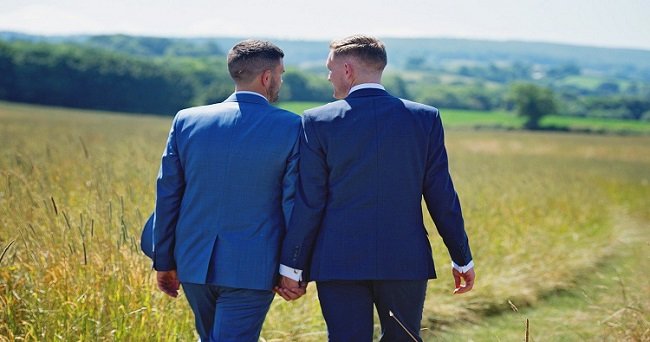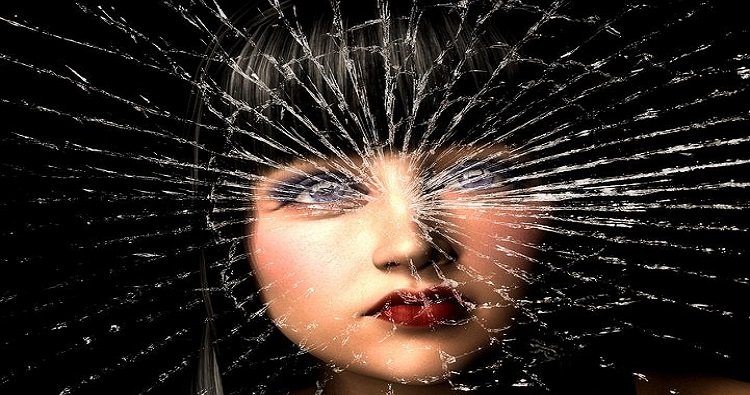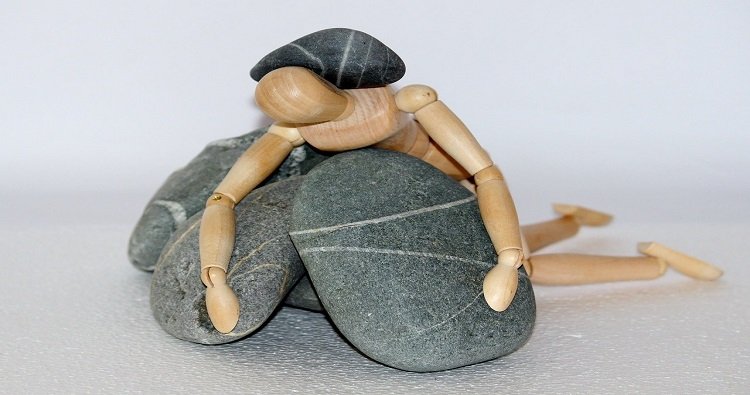- + 91 9958444373
- Malviya Road Dehradun, UK, India.
Blogs detail

LGBTQ
- 2020-08-10
Coming out to your parents about your sexuality is the most terrifying process. I wonder how, if, there would be a time where we’d come out to our parents as straight? Sounds weird right? Well, it shouldn’t. Being gay, lesbian, bisexual, or any other orientation is as much of asexuality as being straight is, and we need to normalize this agenda.
Let’s start by understanding what sexuality or sexual orientation, sexual identity actually terms too. Sexuality or sexual orientation is a broad spectrum yet attunes to a deeper personal level. It’s about understanding one’s romantic and sexual attraction towards others, regardless of their sex and gender, and is not as simple as being just gay or straight. Sexual identity refers to an individual’s conception of themselves, who they identify themselves as.
Types of sexuality
Homosexuals/ Gay/ Lesbians- attracted to people of same-sex.
Bisexual- attracted to both men and women.
Pansexual- attracted to any gender, sex, or sexual identity. (pan means all)
Polysexual- attracted to many but not all genders, sexes, or sexual identities. (poly means many)
Asexual- not attracted to any gender, sex, or sexual identity.
Demisexual- sexually attracted only after an emotional bond. (demi means half)
“LGBTQ/LGBTQ+ is a community of people, worldwide and from all walks of life, who refer themselves as lesbian, gay, bisexual, transgender and questioning or ‘+’ which includes more sexual identities such as pansexual, omnisexual, asexual, etc.”
Discrimination:
Socially, though, the normalcy of sexual identity is narrowed down to man and woman. Any identity other than both these gender or sexes is discriminated against. Acceptance of any other sexual orientation than heterosexuality is a complex concept to grasp for most people. The LGBTQ+ members are discriminated against on a daily basis by strangers (such as passing off rude comments, or judgy eyes) and people they know personally, especially at homes. Studies show that 42% of LGBTQ+ members live in a place where they are not accepted.
The history of struggle is real; of being accepted as someone who belongs to the LGBTQ+ community, the discrimination varies from unfriendly or rude attitude to bigger problems such as the refusal of employment. There are various reasons underlying this discrimination; some of them are:
Religious- The majority of religious people oppose the existence of the LGBTQ+ community. However, it is important to note that we cannot make generalizations based on some religion acting against the notion of the LGBTQ+ community, as not all religions are against this. For example., in Hinduism there is a clear emphasis on bisexuality and duality and it’s acknowledged that it’s a part of heterogeneity and not homogeneity.
Social stigmas- The most common stigma that revolves is that sexual orientation other than heterosexual is a phase, a choice, or a mental illness. In fact, the American Psychology Association has removed homosexuality from the list of mental disorders and has been since spreading awareness about the same. Sexual orientation is not a choice, it’s who a person is, it’s their biological determination and not an illness or mental disorder.
Overt beliefs- Unconscious biases towards the LGBTQ+ community or stereotypical thoughts about them result in unruly behavior, which shouldn’t be tolerated.
Schools- Being harassed in school has become very prominent for students belonging to the LGBTQ+ community. Statistics show that almost 56% of students belonging to the LGBTQ+ community face verbal abuse daily.
Institutional-The LGBTQ+ members are denied employment based on their sexual identity. They are being significantly paid less as well. One of the examples is: In 2018, YouTube had targeted the LGBTQ+ members by demonetizing their videos and adding anti-LGBTQ+ advertisements. A study found that almost 7-41% of gay and transgender people were verbally/physically abused in their workplace or had their workplace vandalized.
Healthcare services- Denial of health care services are another big issue in the face of discrimination and one of the most urgent to be taken notice of.
In 2016, the National Institute on Minority Health and Health Disparities identified the LGBTQ+ community as a health disparity population because individuals who belonged to this part of the group had less access to healthcare. The Center for American Progress conducted a national survey in the year 2017 that showed nearly 1 in 10 LGBTQ+ individuals and nearly 3 in 10 transgender people reported that a healthcare professional refused to see then in the prior year because of their actual or perceived sexual orientation. Some of the very common problems that the LGBTQ+ people face in the healthcare centers are:
Lack of proper addressing of gender/sexuality in admission forms.
Stalling the process of admission and treatment, even in cases of emergency, while deciding which ward to provide to a transgender person.
People with same-sex partners have difficulty explaining their sexual life to doctors because of taboo or ignorance or both.
Some doctors are not trained/equipped to understand and treat the LGBTQ+ community and their problems properly. As a result, there is misdirection, mistreatment, and misguidance.
Not enough study or survey had been conducted on the healthcare issues of the LGBTQ+ community, which means practitioners have basically less information as a background.
An overall sense of being ostracized, separated, being treated differently- all these stopped the LGBTQ+ individuals from reaching out for professional help in the first place.
Members of the LGBTQ+ community have been fighting for the right to be respected equally as heterosexuals and are spreading awareness about the same for easier acceptance. Years of powerful movements from gay rights moment to present day, pride parade has been commemorated for raising awareness of their struggle for freedom, dignity, and recognition worldwide.
PRIDE
The name “Pride” was credited to bisexual activist Brenda Howard, who had organized the first Pride Parade in order to celebrate the one-year anniversary of Stonewall Uprising. “Pride” word represents self-respect and dignity as expressed by members of a group, especially ones that have been socially marginalized based on their shared identity, culture, and experience.
The month of June is marked as Global Pride Month, mainly because the original organizers selected this month to pay homage to Stonewall Uprising, June 1969, New York; marking it as an important event that became a pioneer for modern gay right movements.
The colorful rainbow patterned flag was designed by the first openly gay elected official, Harvey Milk, and his activist friend Gilbert Baker; portraying the diversity of groups that are a part of the broad community. More flags were added to represent different groups of the LGBTQ+ community. Some of them are:
1. ORIGINAL RAINBOW FLAG - It consisted of 8 stripes in different colors, each one with a specific meaning...
Pink- Sex
Red- Life
Orange- Healing
Yellow- Sunlight
Green- Nature
Turquoise- Magic/art
Indigo- Serenity
Violet- Spirit
2. TRADITIONAL RAINBOW FLAG - In 1979, 2 stripes were dropped from Baker’s version (Pink and Turquoise), thus, resulting in the 6- stripe flag version the people are most familiar with.
3. MORE COLOR MORE PRIDE FLAG - In 2017, the flag underwent further changes with the addition of 2 extra stripes of black and brown to include people of color who were often excluded from the LGBTQ+ community.
4. BISEXUAL PRIDE FLAG - Michael Page decided to create a flag with symbols bi people felt and affinity with.
The top 40% of the flag is magenta - same-sex attraction.
The middle 20% is lavender- attraction to both sexes.
The bottom 40% is royal blue- heterosexual attraction.
5. PANSEXUAL PRIDE FLAG - The flag consists of 3 stripes to symbolize pansexuality as either an attraction regardless of gender or an attraction to all genders.
Pink- Attraction towards women.
Yellow- Attraction towards people of other genders.
Blue- Attraction towards men.
6. ASEXUAL PRIDE FLAG - The flag was created by a member of the Asexuality Visibility and Education Network (AVEN). It is a 4 colored striped flag.
Black- Asexuality.
Grey- Demisexuality.
White/ Purple- Allies for the asexual community as a whole.
7. TRANSGENDER PRIDE FLAG - Transgender activist and author Monica Helms designed the flag in 1999. The flag includes baby girls (pale pink) and baby boys (pale blue) and white stripe in the center (represents those who are intersex, transitioning or consider themselves having a neutral or undefined gender)
8. GENDERFLUID PRIDE FLAG - J.J. Poole created the genderfluid pride flag in 2012. The flag has 5 horizontal stripes...
Pink- Femininity.
White- All genders.
Purple- Both feminity and masculinity.
Black- Lack of gender
Blue- Masculinity
9. POLYSEXUAL PRIDE FLAG -
Often described as a middle ground between bisexuality and pansexuality, polysexuality flag symbolizes multisexual attraction, the pink stripe representing attraction to women, the blue stripe representing attraction to men and the green stripe representing attraction to people who don’t conform to male or female gender.
10. STRAIGHT ALLY PRIDE FLAG - This flag celebrates all straight and cisgender people who are proud allies of the LGBTQ+ community.
Black and white- Heterosexual genders.
A-shaped rainbow- Both ally and activist
11. ANDROGYNOUS PRIDE FLAG - The flag represents those who identify as being a mix of both male and female (not necessarily in equal measure). On the flag:
Blue- Masculinity
Pink- Femininity
Grey- Between 2 genders
Equal symbol- Equal interplay of the two binary genders in a person’s identity.
The global ratio of LGBTQ
Surveys in Western cultures find, on average that about 93% of men and 87% of women identify as heterosexual. 0.5% of men and 1% of women as evenly bisexual. 2% of men and 0.5% of women as homosexual.
An analysis of 67 studies found that the lifetime prevalence of sex between men (regardless of orientation) for East Asia was 3-5% and 6-12% for South and South-East Asia. 15% for Eastern Europe and for Latin America, it was found to be 6-20%.
According to the figures submitted to the supreme court by the government of India in 2012, there were about 2.5 million gay people recorded in India and approximately 4.8 million transgender people in India.
Victory Ruling
-Around 116 countries legalized homosexual acts, 65 countries prohibited employment discrimination based on sexual orientation. 20 countries legalized joint adoption for same-sex couples. 4 countries legally recognized same-sex relationships. 19 countries legalized same-sex marriage starting in 2001.
On Monday, June 15, 2020, the supreme court ruled out a landmark civil rights law that protects LGBTQ+ people from discrimination in employment. The LGBT activists in India scored a huge victory on Thursday, September 6, 2018. When the supreme court struck down the nation’s 157-year-old law criminalizing consensual gay sex. India’s LGBTQ movement can be a model for other countries.
The global push for gay rights around the world has been increasing even in culturally conservative countries. Countries like The United States, India, South Africa, Japan, South Korea, and Mexico have registered the largest gains in public acceptance with gay rights since 2002.
Every human being has the same basic human rights, to love, and to be loved. The LGBTQ+ community has been discriminated against and bullied against over something they have no control over. Different LGBTQ organizations are doing their best to bring awareness to society regarding equal rights for people with various sexual orientations.
It is to be kept in mind that all sexual orientations should be viewed equally whilst being given their due respect. The greatness of a society lies not in oppressing the minority but empowering them to stand equal to the so-called “majority.”
Contact now
We are a group of health professionals, including Psychologists, Clinical psychologist, Rehabilitation Psychologist, Counsellors, Mindfulness Experts and Social Workers. We are working since 2018 in India to foster mental health.
Contact Us
recent blogs
-

SADNESS AND DEPRESSION ARE DIFFERENT!
2020-06-16 -

ALCOHOL USE DISORDER (AUD)
2020-06-19 -

SEASONAL AFFECTIVE DISORDER (SAD)
2020-06-12 -

UNDERSTANDING MINDFULNESS MEDITATION
2020-06-03 -

BURDEN OF DEPRESSION
2020-06-17







